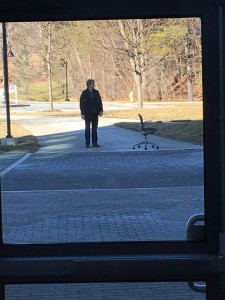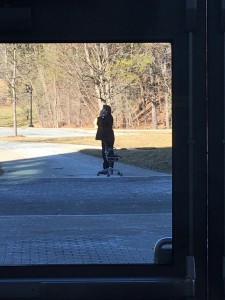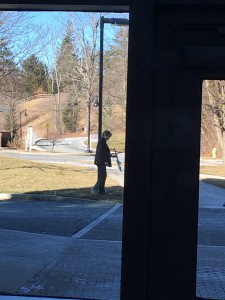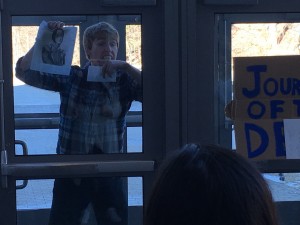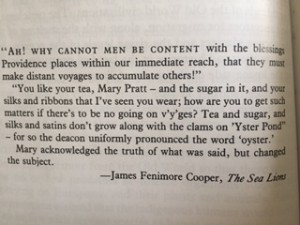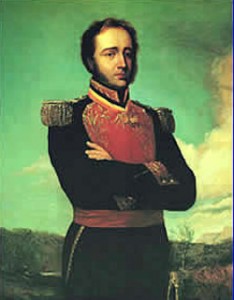Keep it:
I want to keep the idea of mediation between performers and audience (excluding the commonplace mediation of the proscenium). For example: the Sryia piece, the false memory piece, the coca flower piece, Bailey’s box, Kimmy’s silhouette.
Leave it:
I want to leave the inconsistency, both of having our individual artworks combined in one room, and of not having unified them into a theme or narrative, or any kind of comprehensible linear(ish) experience. I think that we should narrow down our interests to 2-4 central themes (or coherent groupings of themes) and temporarily split into groups to create more focused material. We spent the first third of the class generating a lot of material in an arbitrary way, and I think that what we have so far is not in any way “the show” because there is no real intention behind it yet. While many of the performances have promise to be expanded, revised, and connected to each other, the other objects are more like tools that don’t stand on their own in a performance context.
Want it: Track-Based Immersive Theater
I want us to consider creating a unified audience experience. Even if each individual spectator has a totally unique experience in the sense of seeing separate performances in different orders, every single one would fit into the same “world”. As I mentioned on the first day I’m interested in immersive theater, but I can’t really add this in this section because we’ve already been creating immersive theater! But to be more specific, I would like us to consider creating a piece in which the audience is split up and has unique experiences–we could picture these as puzzle pieces that they can cognitively build into the world of the performance, even if they don’t finish the whole puzzle! Those of you who were in or saw Fefu has some idea what I’m talking about with regard to separating the audience, but that was a VERY tame example. I’m thinking more of an immersive performance called Then She Fell, in which each audience member takes a different pre-defined track and spends a lot of time 1-on-1 with the performers. To give some examples, I brushed someone’s hair, I had to put together pieces of a letter, I had to take dictation, and there were small amounts of food and drink offered.
This kind of diversity and separation would give each person a lot of autonomy in crafting their character/portion of the world/interaction with the audience. Anything we do with the audience, with that much attention devoted to them, would turn out to be really interesting. I think that a formal challenge in this vein would go very well with the work we have already created. Please take this suggestion in the broadest way possible, I think the underlying idea is for us to center the spectator (individual and/or intimate groups) in the entire performance. We (or likely DGM) can make a more specific challenge if we want.


